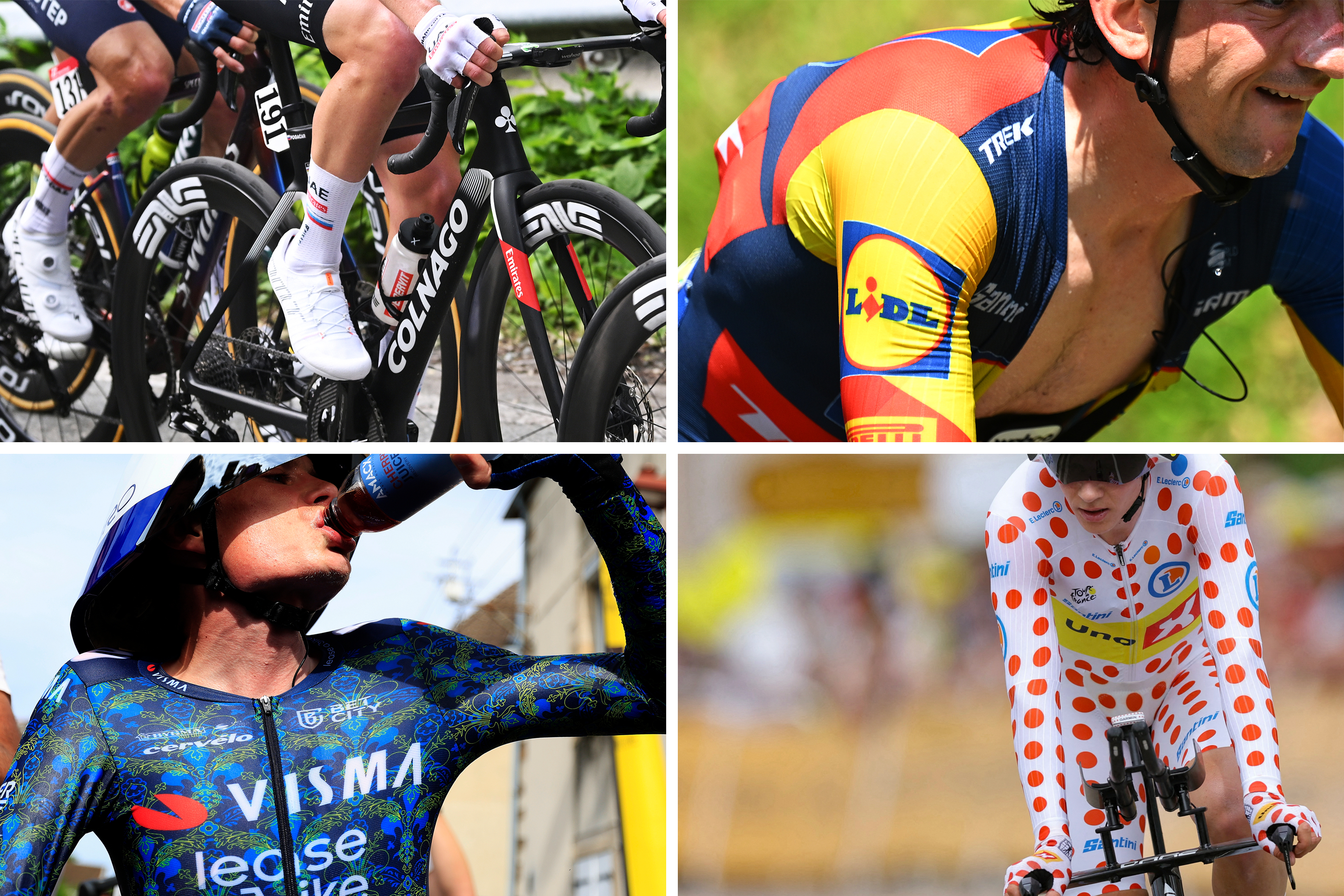
Hello, I’m CyclingSpy. I have an Aerospace degree and I’ve worked in sports aerodynamics for years, working with some of cycling’s biggest-name riders to improve their performance at the highest level of racing.
I report on some more niche tech/aero pieces that I feel don’t get the attention they deserve and I use my experience to offer my opinion and insight on new bits of tech that I find, or my followers on Instagram send in.
Bikes often get the biggest features (unless we're talking about Mark Cavendish's socks) despite not necessarily making the biggest difference in performance. So in this feature, I have rounded up all of the other things. I talk about clothing, computer mounts, socks (of course) and more. Think of it as an appreciation of the little things that would otherwise fly under the radar.
While I have thousands of hours of aerodynamic testing (wind tunnel, velodrome, CFD) experience across multiple sports, I haven’t tested everything I talk about in the article. I’m using my experience in researching similar things to try and explain what might be happening, but this is just my opinion. Rider aerodynamics is so individual and complex that we can never be sure why a certain choice is made unless we were in the room during the test.
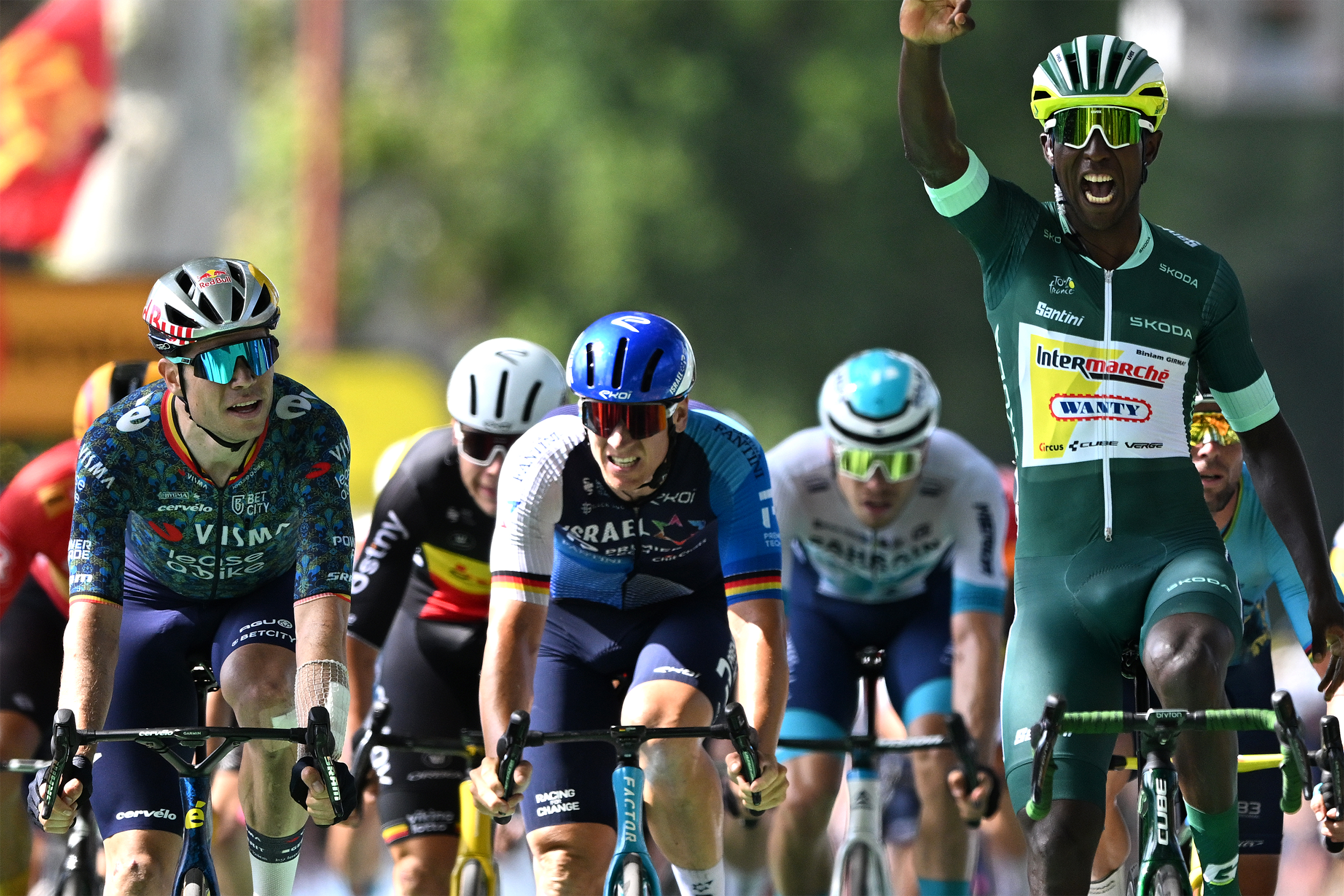
Biniam Girmay's bar tape
It’s something of a running joke on my posts that I hate when teams and riders have their handlebars taped all the way up to the stem. It is a fact that bar tape creates more drag than having the smooth, aero profile or the handlebar exposed. A taped bar has a larger frontal area and worse surface properties, and it may only be a couple of watts (even at 60+ km/h) but it takes more effort to wrap more of the handlebar and it makes you slower, I just don’t get why teams are still doing it.
We can see in the image above that Girmay is the only rider with his bars taped in this way, yet he is still winning. He is the most successful sprinter in the race at the moment. It doesn’t mean that everything I’ve written is wrong or that small drag improvements don’t matter, it’s just that Girmay’s timing of his sprints especially is more than overcoming any deficiencies in his setup.
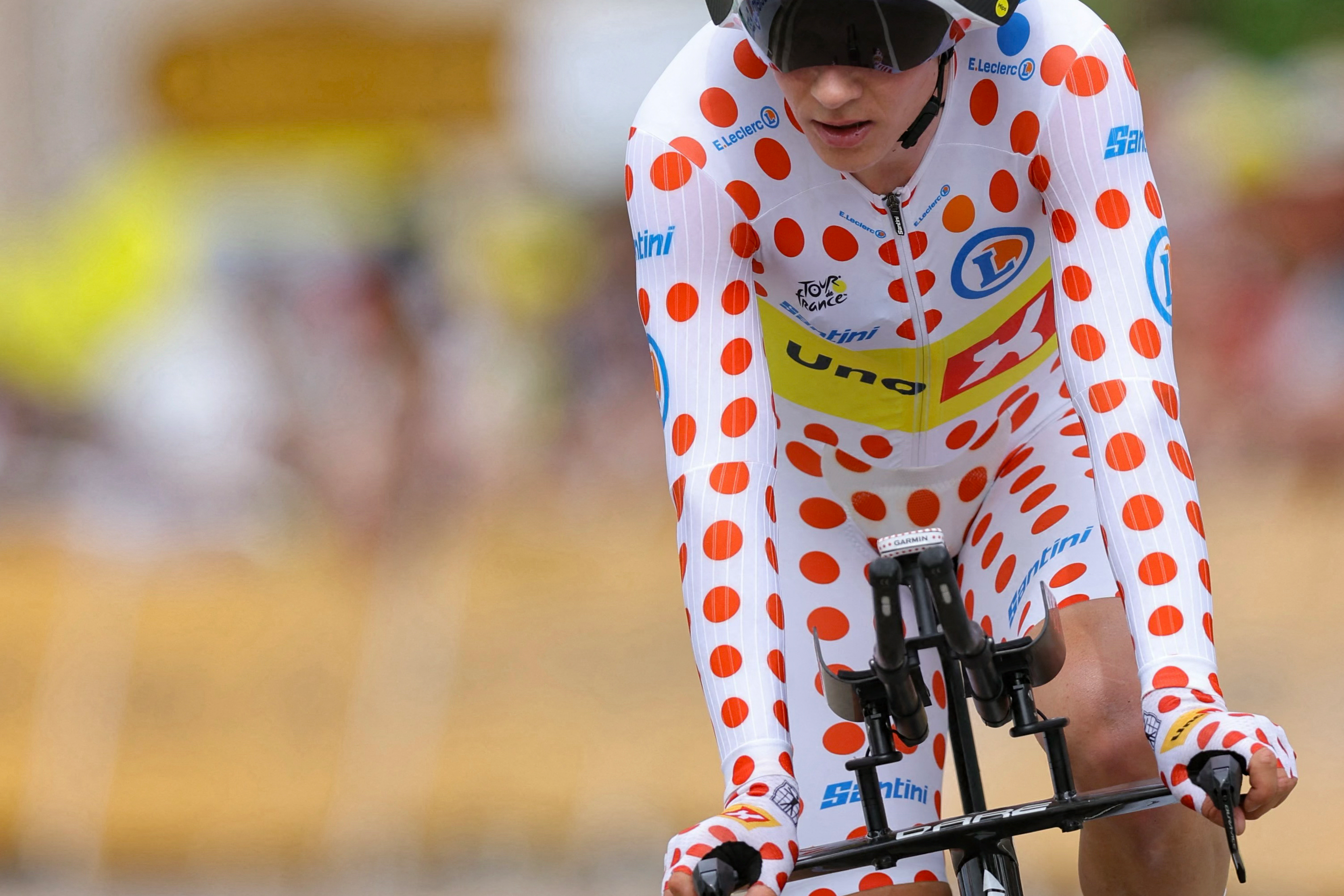
Jonas Abrahamsen's computer mount
There were several interesting bits that were reported on from the Stage 7 time trial (such as Pogačar’s new lightweight TT setup) but one of the smaller pieces I liked was Jonas Abrahamsen’s computer mount.
Standard computer mounts on time trial bikes usually place the head unit in between the time trial extensions. However, Abrahamsen used an aerofoil-shaped pole to mount his computer much higher up and closer to his face. I don’t know why it was the case here as he wasn’t giving 100% in the race that day, but it’s something novel in races of this level.
I’m convinced that there would be some aerodynamic interactions that could be investigated between a computer mounted this way and different helmets/visors. I’d be especially keen to see how large computers interact with the gurney flaps used on the visors of Ineos Grenadiers' Kask helmets.
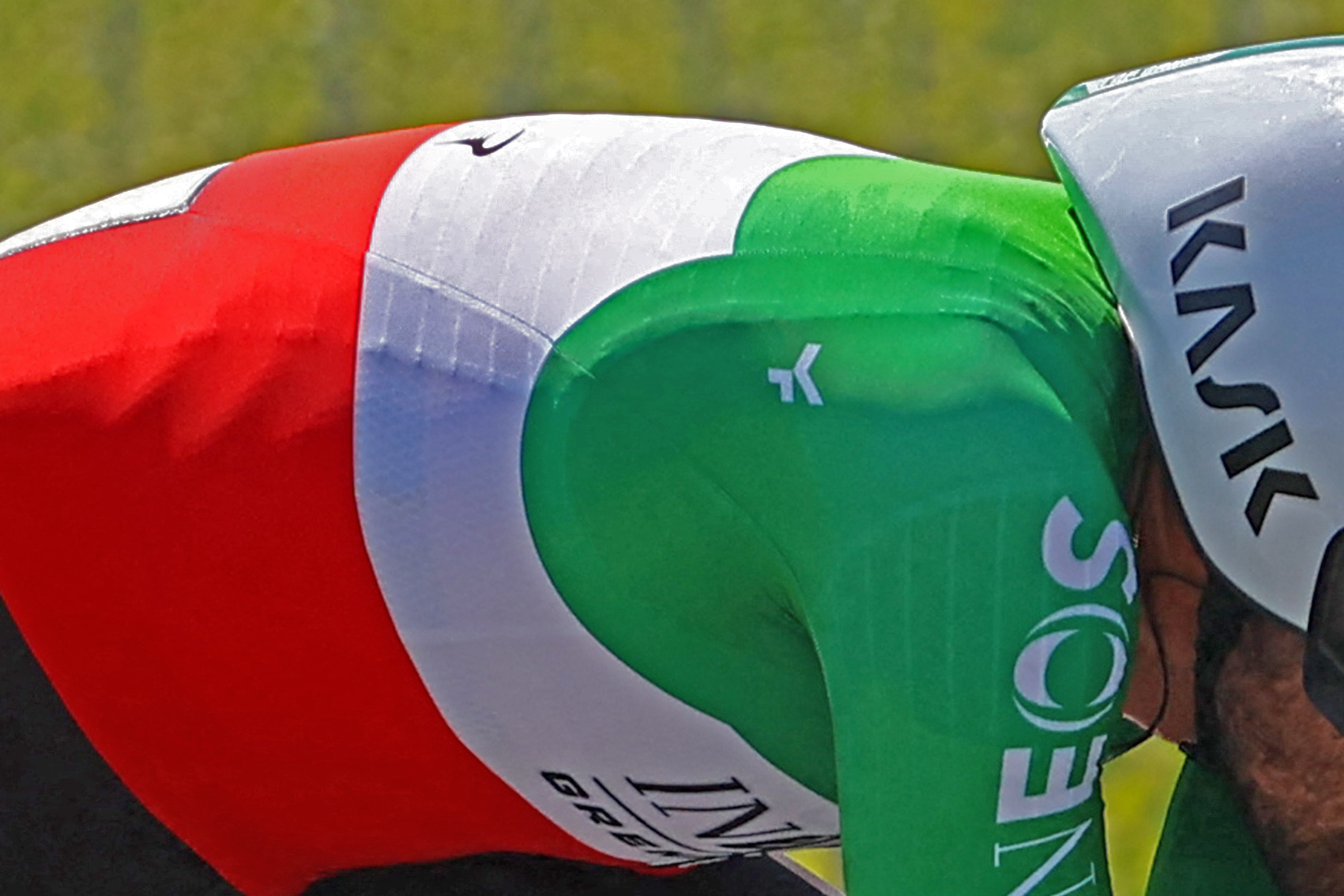
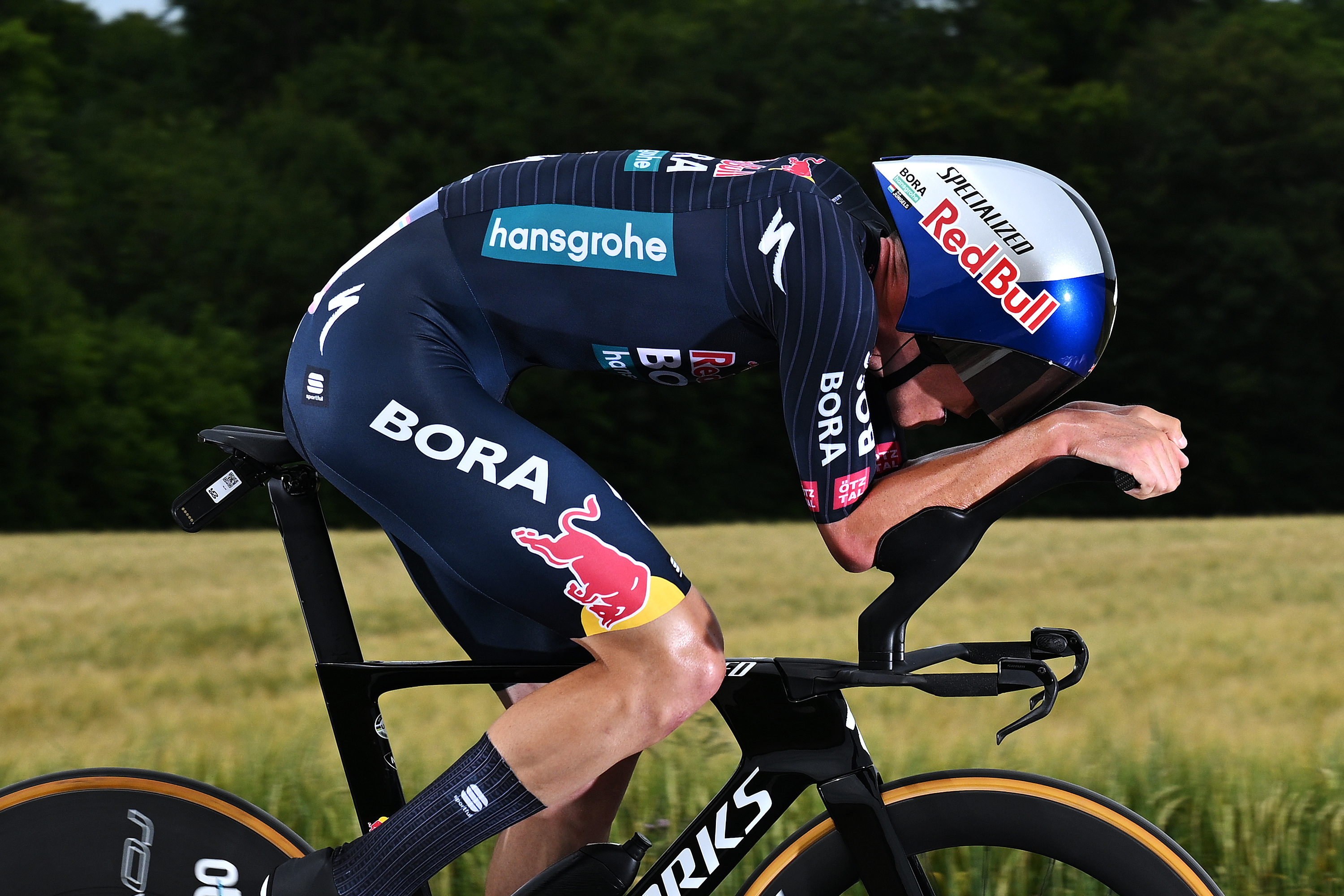
Ineos Grenadiers vs Red Bull-Bora-Hansgrohe
The skinsuit that Red Bull-Bora-Hansgrohe used for the first time trial at this year’s Tour has been in use for over a year now, but I wanted to highlight a similarity between it and the approach that Ineos Grenadiers have been using for a couple of years.
You can see in the images that there are ridges in the fabric on the arms and down the back of Filippo Ganna (just above where you can see his ribs) and Bob Jungels. However, Ganna’s suit has this ridged fabric as a base layer using double layer technology and the Red Bull suit is all single layer but with some treatment to the fabric. Both teams have invested a lot of money into the skinsuit development and presumably believe that they have the best option for their leaders. What I find interesting is that they have used essentially the same fabric in the same locations but in a different way to each other to reach the same goal.
It is worth noting that all Red Bull-Bora-Hansgrohe riders were using identical skinsuits, whereas Ineos Grenadiers have several options for each of its riders and selects the option that performs best. Ganna uses the double layer on the back, for example, but other riders in this year’s Tour aren’t.
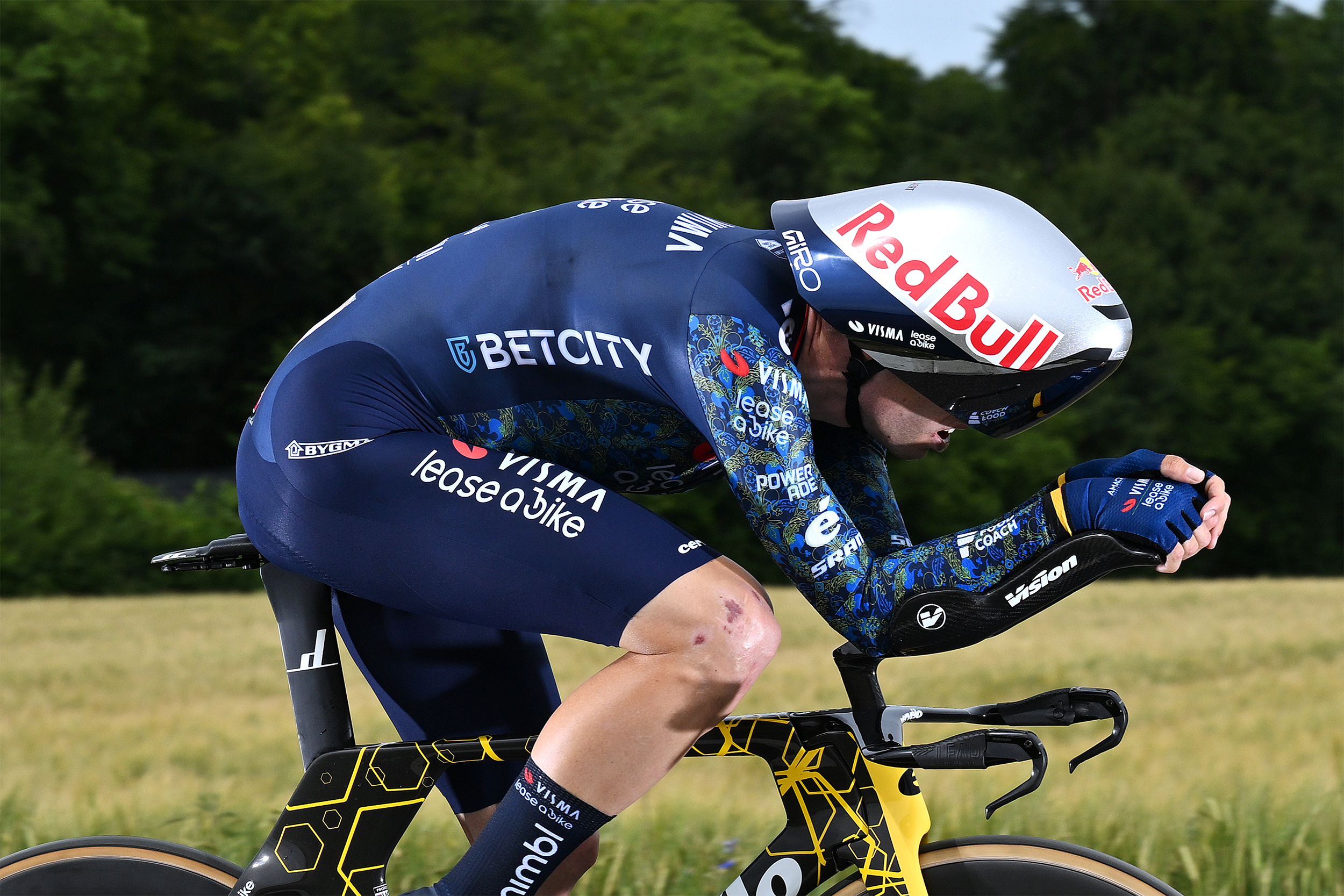

Visma Lease-a-Bike skinsuit
Visma Lease-a-Bike's 'Renaissance' themed design makes it difficult to spot what is going on in the skinsuit. The dark colour and pattern on the fabric mask the shadows, and it is the shadows across the fabric that allow us to spot what fabrics the team is using.
However, we can still see that this year, they have changed the fit of the suit so it has extra fabric across the rider’s armpit in an attempt to reduce drag. The airflow around a rider’s arms is very sensitive to small changes and has a huge influence on what happens around the rider’s body. I’ve seen wind tunnel results where having this extra fabric (like a flying squirrel) has resulted in a drag increase but Visma-Lease a Bike must be sure that it’s producing a drag reduction on their key riders.
It all depends on the skinsuit’s fabrics, the helmet, the shape of the rider as well as which direction the wind is coming from.
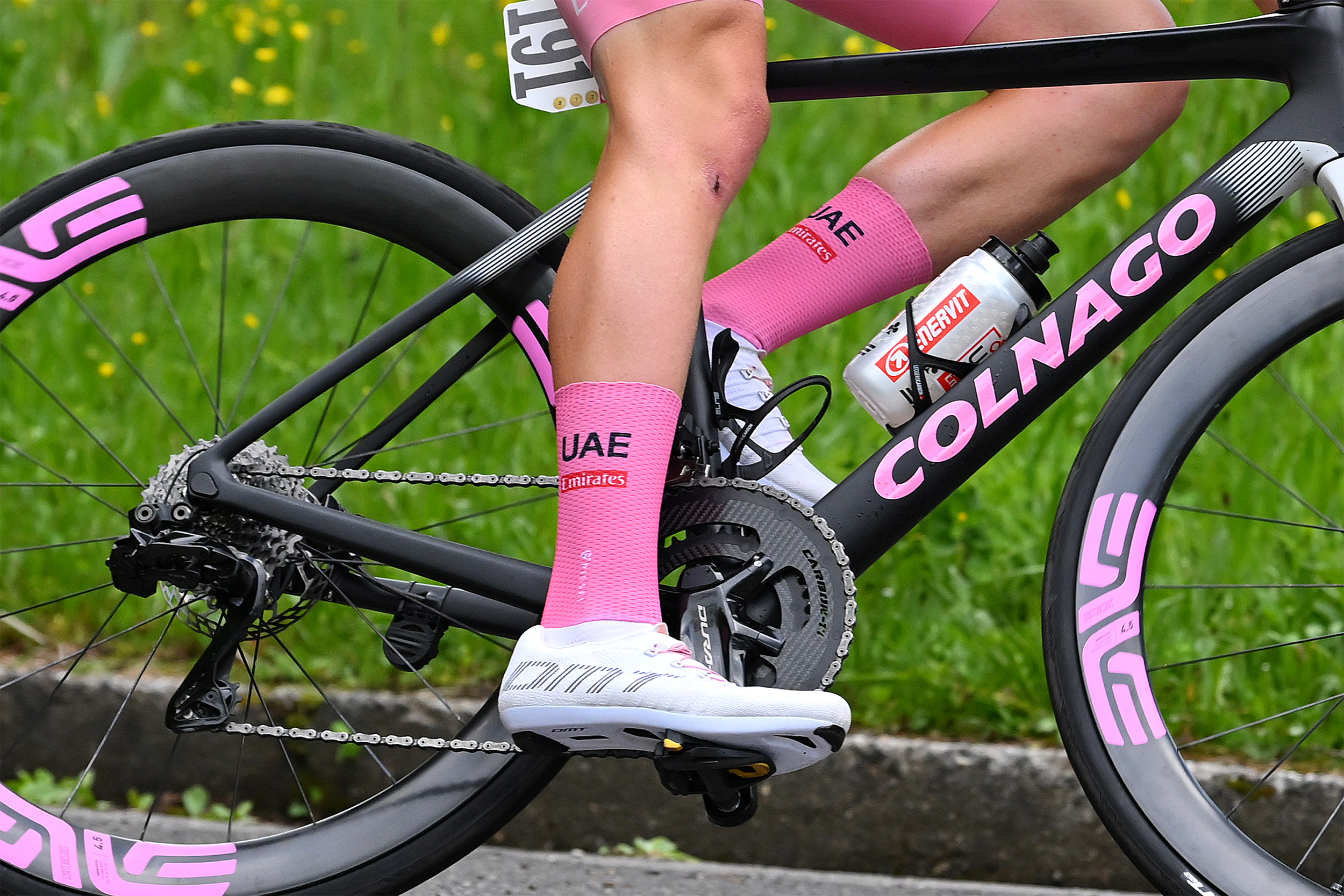
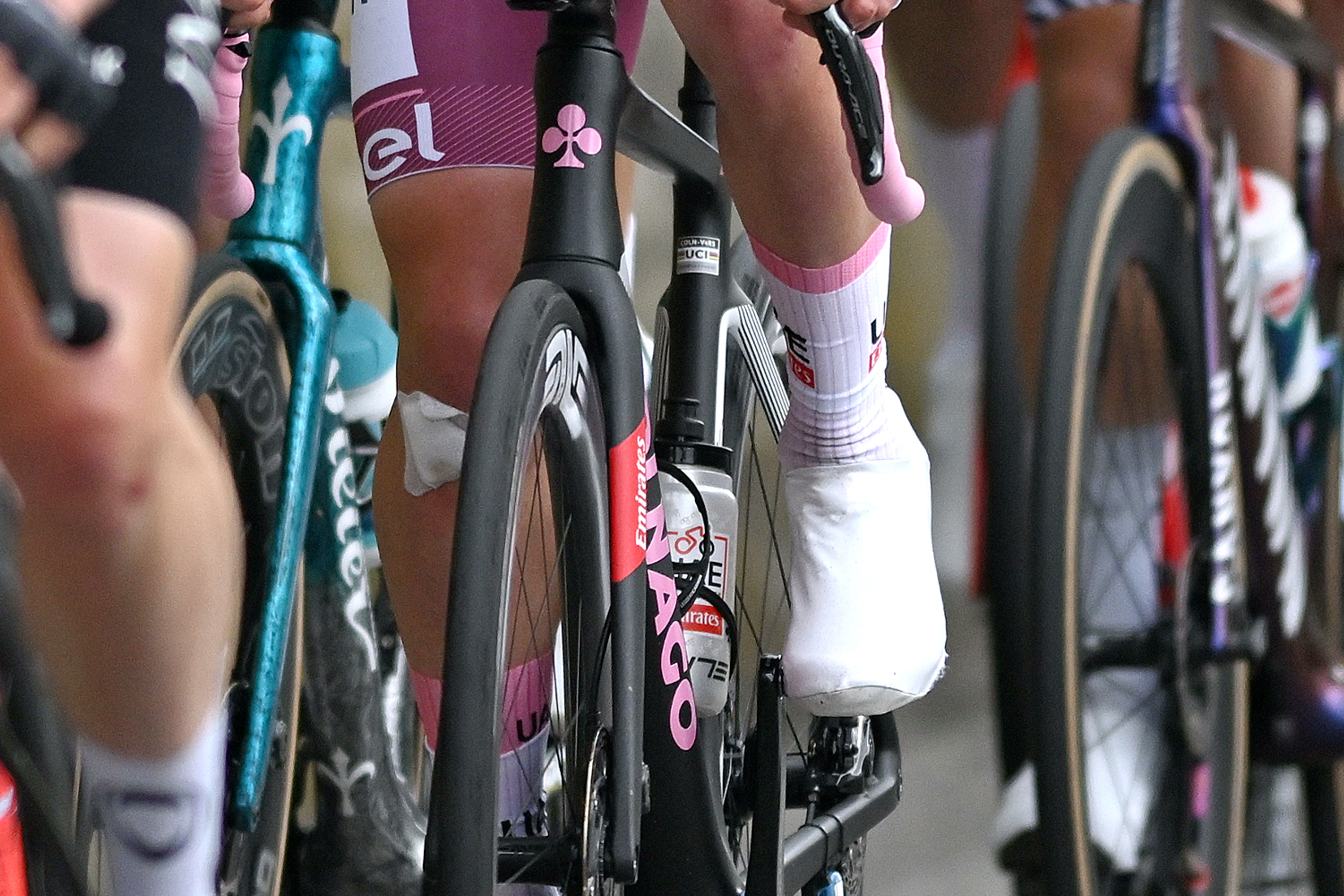
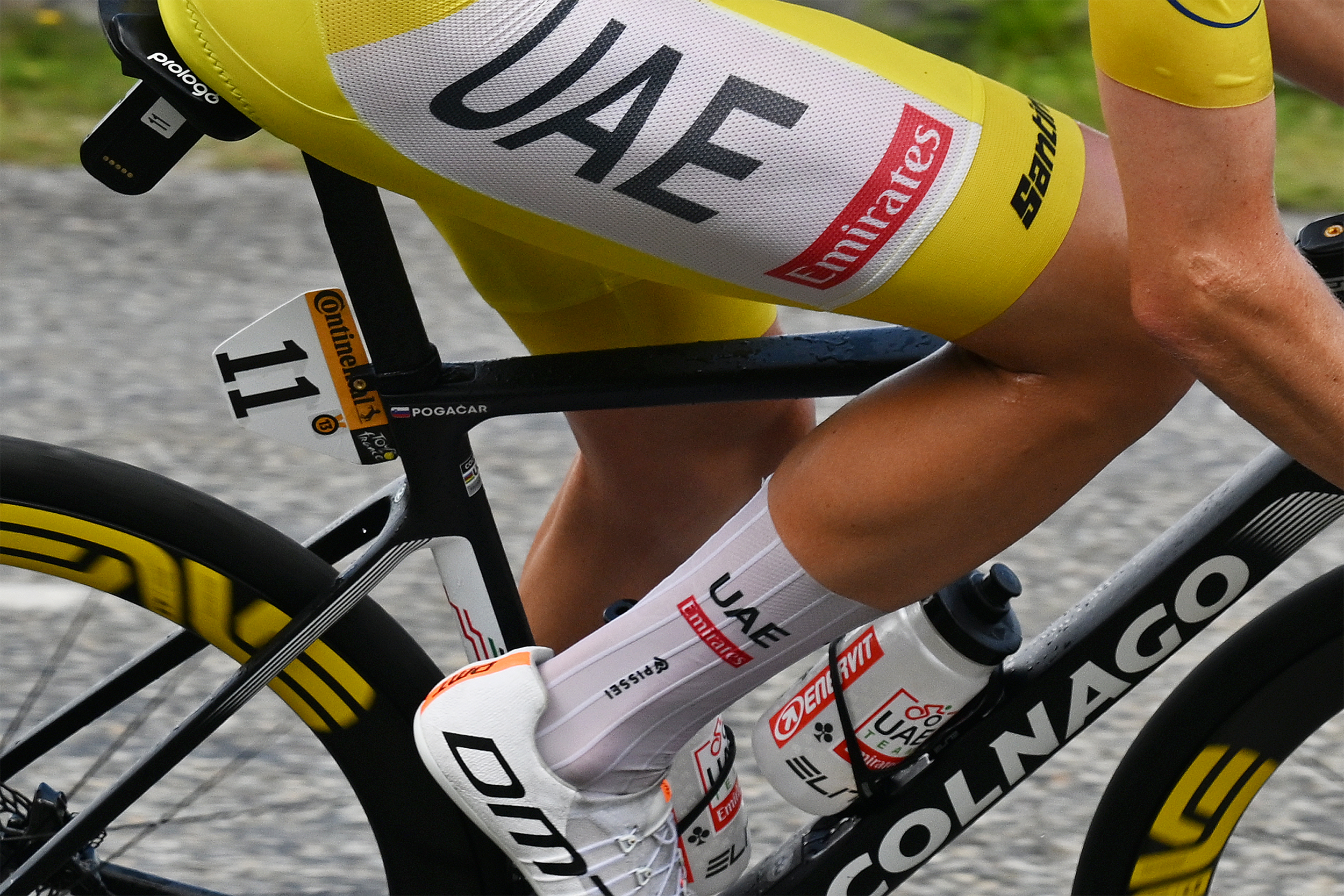
Pogačar’s sock wardrobe
In the Giro d'Italia, Pogačar started with some socks made of a breathable material that will also have an aerodynamic effect of tripping the boundary layer to reduce the wake and therefore drag of the lower leg. These were in his standard team colours (white) for the first day. Then, for his first day in the pink jersey, he used a ‘normal’ aero ribbed fabric on his sock before reverting back to his original socks (albeit in a pink version) for the remaining stages.
In this year’s Tour, Pogačar is using the same socks he used during last year’s Tour. These are made from the same material that is used in a lot of aero base layers at the moment. It features large protruding ribs to trip the boundary layer in a controlled way, rather than relying on a general roughness to the fabric to achieve this effect like his Giro socks. Using the aero base layer fabric as a single layer rather than a double layer will mean the boundary layer trip effect will happen at a much lower speed. When accounting for the fact that the legs are moving, this speed ends up being about 30km/h or roughly as fast as he would ride up a 5% climb, providing a couple of watts of savings on this sort of terrain.
What I find interesting is the fact that unlike his socks in the Giro, his socks in the Tour have remained white. The aerodynamic performance of some fabrics can change when they go through the process of applying colour/logos to them. I don’t know if Pissei or UAE Team Emirates are aware of this (or have tested it) and are using an undyed sock as a result, or if they have simply run out of the fabric and can’t make a special yellow version.
What is also strange is that Pogačar used a different fabric in the sock for the Giro and the Tour. The Giro fabric was new to him for this year (other teams have used it in the past) but for the Tour he has been using last year’s fabric.
If we assume that the best equipment is being used for the Tour, did he and the team knowingly use a sock with higher aerodynamic drag in the Giro, just so he could ride matching pink socks?
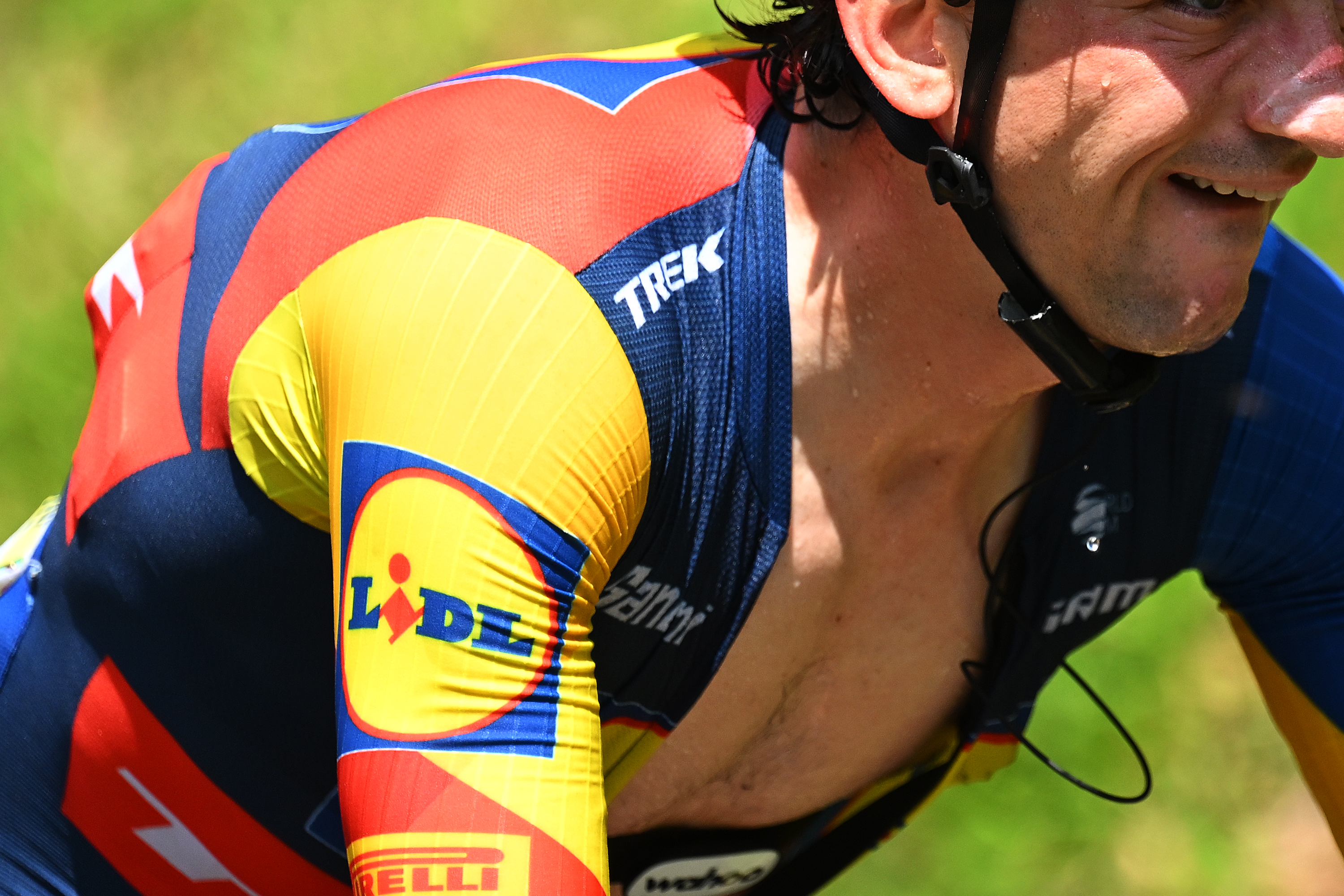
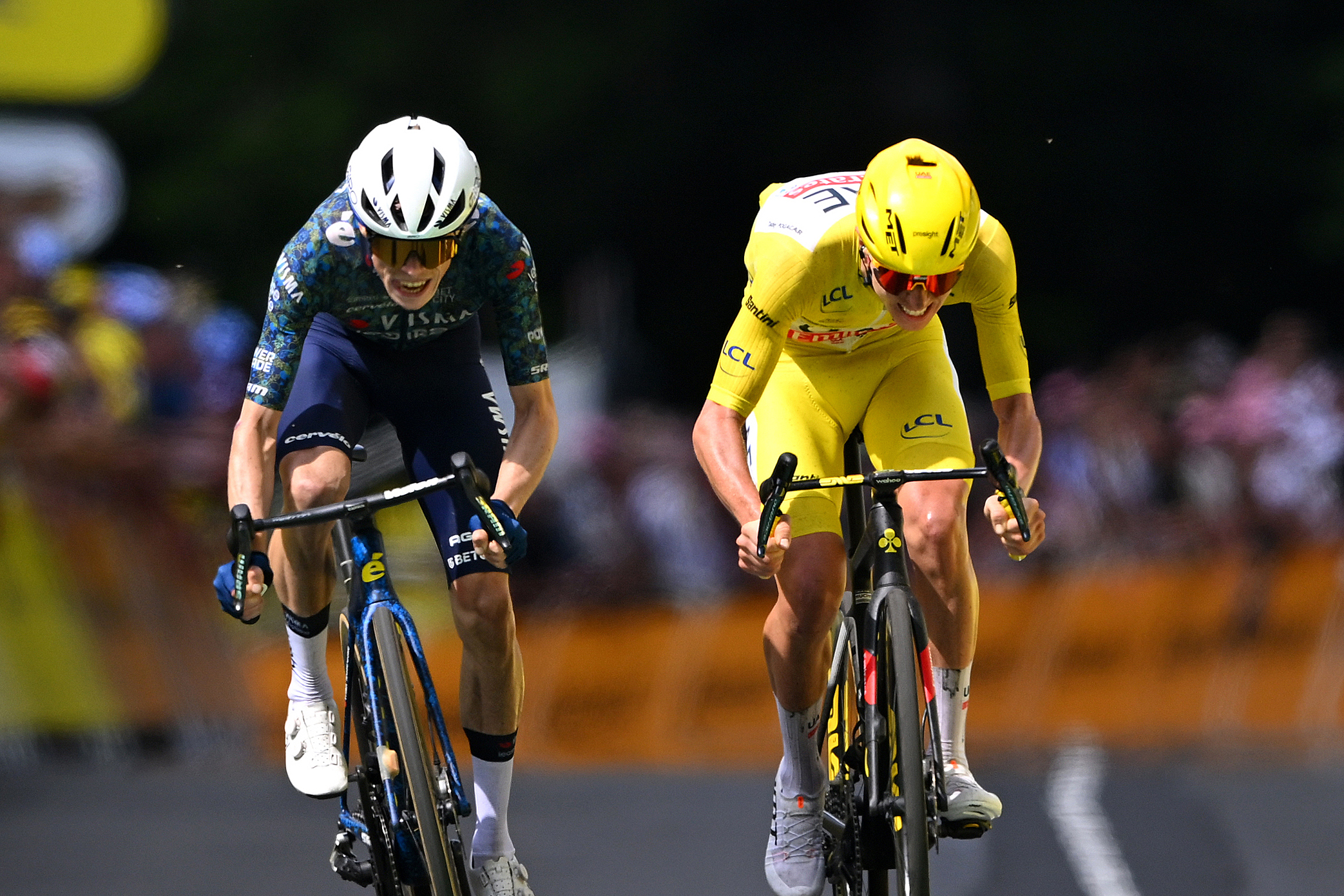

Comparing Lidl Trek’s Santini kit with the Santini-issued yellow jersey
Pogačar has worn several different Santini-branded skinsuits during this year’s race. When losing the sprint to Vingegaard on stage 11, he was wearing an old version of the Santini Viper skinsuit (the same version Girmay has won sprints in).
Lidl-Trek have seen a couple of updates to this skinsuit since this old version, so I think it’s fair to say that the race leader’s jersey would be slower by some watts than the version Lidl-Trek are using. Of course, aerodynamics are rider-specific and how large the difference in drag between the skinsuits will change from rider to rider.
A more interesting observation is the skinsuit Pogačar has used on stages 14 and 15 - the two biggest mountain stages so far. It has smooth fabric on the sleeves and a breathable fabric on the chest and sides and down the outside of the legs. This combination is something that I haven’t seen on any Lidl-Trek rider but for good reason. This mountain skinsuit is nearly identical, in both fabric choice and construction, to the Le Coq Sportif skinsuits from a few years ago.
It's not uncommon for clothing manufacturers to outsource production at this level. Back in the early days of Team Sky, for example, the Adidas (and subsequently Rapha) kit was actually produced by Nalini, and more recently at the 2022 Giro d'Italia, British rider Simon Yates' time trial skinsuit was made by Vorteq, rather than BikeExchange-Jayco's kit sponsor Alé.
It would be interesting to find out if Santini makes all of the skinsuits for the road stages, or whether it is outsourcing some of the production in the same way.
Contrary to the above, however, the skinsuits in the time trial were the same across all of the leader’s jersey holders and Lidl-Trek.
Get unlimited access to all of our coverage of the Tour de France - including breaking news and analysis reported by our journalists on the ground from every stage of the race as it happens and more. Find out more.







